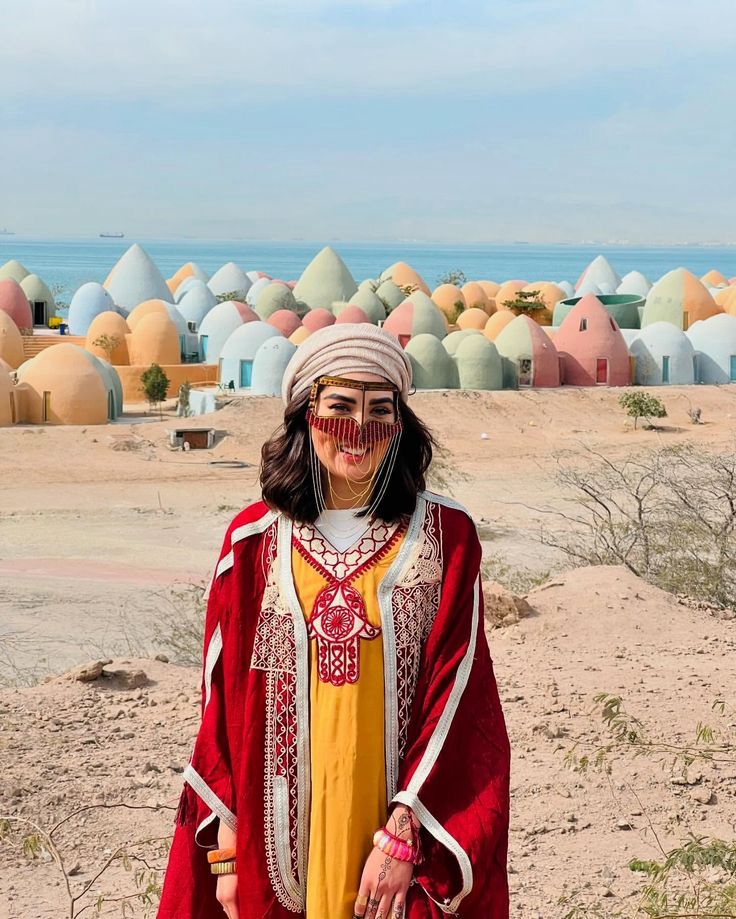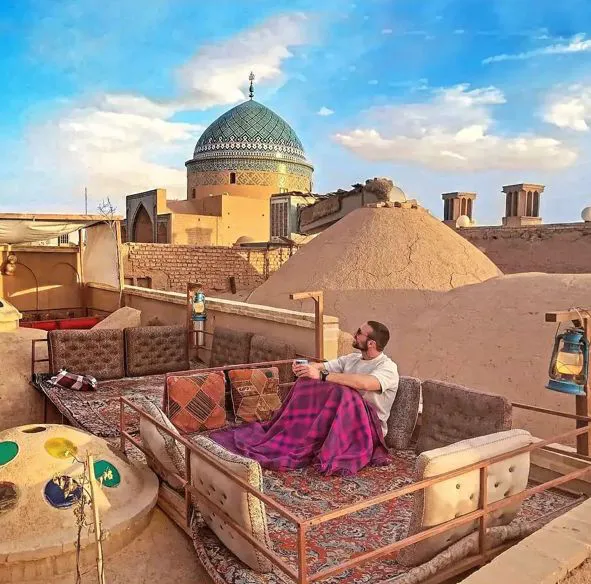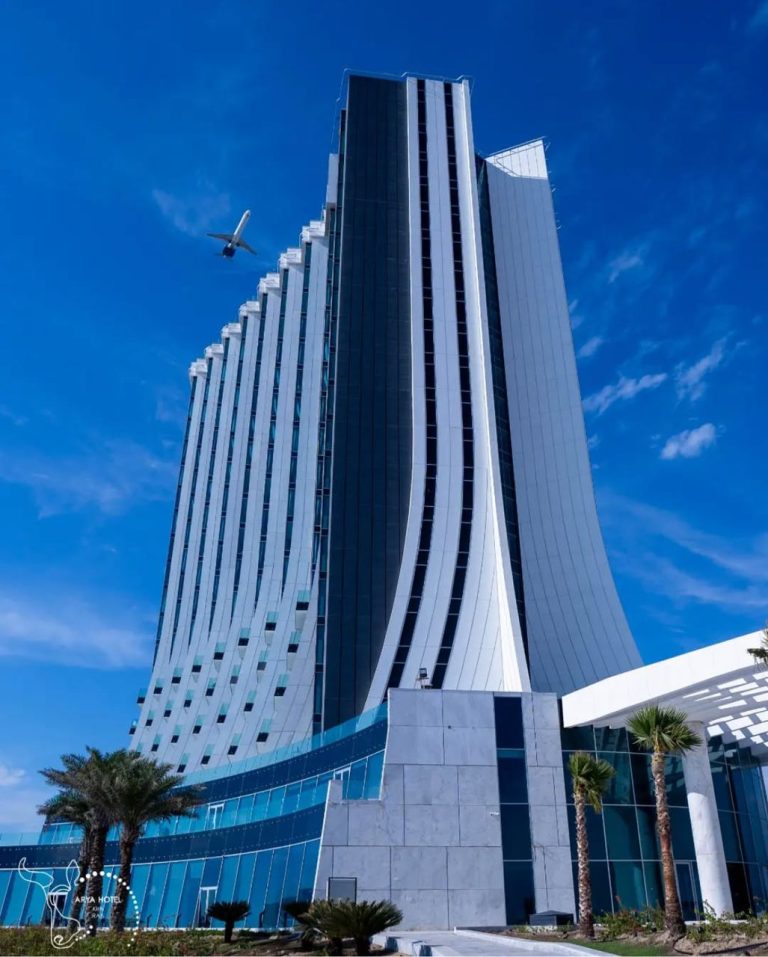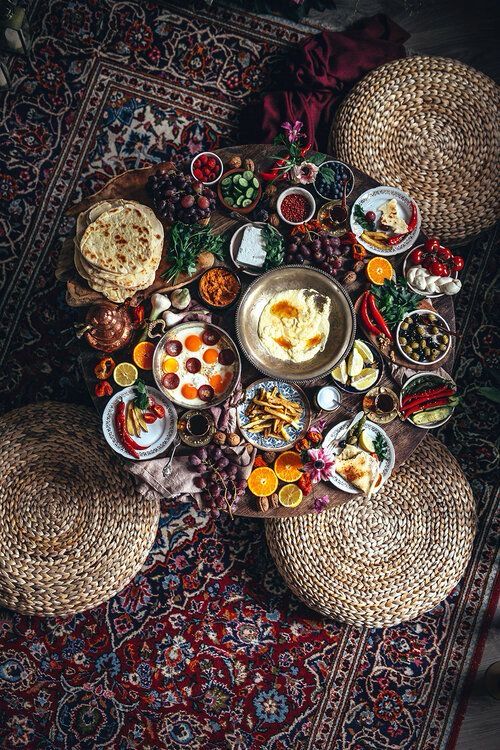Iran Travel Guide 2025: Everything You Need to Know

Iran Travel Guide 2025: Your Ultimate 2025 Travel Experience
Planning your Iran travel in 2025? A land where ancient wonders meet modern vibrancy, Iran is home to stunning historical sites, breathtaking landscapes, and legendary Persian hospitality. From the grand Persepolis to the vibrant bazaars of Tehran, every corner of this country offers a story waiting to be discovered.
Whether you seek history, culture, or natural beauty, Iran has it all. With updated travel regulations, improved visa options, and a growing number of visitors, there has never been a better time to explore Iran. Get ready for an unforgettable journey—Iran is calling! ✈️
Iran Visa Requirements 2025: Everything You Need to Know

Traveling to Iran in 2025 is easier than ever, thanks to streamlined visa policies and improved application processes. Whether you’re visiting for tourism, business, or cultural exploration, understanding Iran’s visa requirements is the first step to planning your trip.
Do You Need a Visa for Iran?
Most travelers require a visa to enter Iran, but the good news is that Iran offers multiple visa options based on your nationality and purpose of visit. The most common type for tourists is the Iran Tourist Visa (Type B), which allows visitors to explore the country for up to 30 days, with the possibility of an extension.
Iran e-Visa: The Simplest Way to Apply
Iran introduced the e-Visa system, making it easier for travelers to apply online before arrival. The process involves:
- Filling out an online application on the official Iranian visa portal.
- Uploading required documents, including a passport photo and a copy of your passport.
- Waiting for approval (processing time varies from 5 to 10 business days).
- Receiving an authorization code to collect your visa upon arrival or from an Iranian embassy.
- Visa on Arrival (VOA) in 2025
- Citizens of many countries can obtain a Visa on Arrival (VOA) at major Iranian airports, including Tehran, Shiraz, Isfahan, and Mashhad. However, travelers from the United States, Canada, and the UK must apply in advance .
Documents Required for an Iran Tourist Visa
To apply for an Iran visa in 2025, you will typically need:
- A passport valid for at least 6 months beyond your travel date.
- A passport-sized photo with a white background.
- A completed visa application form.
- Travel insurance covering your stay in Iran.
Important Visa Tips for 2025
- Iran no longer stamps passports upon entry, making it easier for travelers concerned about future visa restrictions.
- Visa extensions are possible at immigration offices in major cities like Tehran, Isfahan, and Shiraz.
With simplified procedures and improved accessibility, getting an Iran tourist visa in 2025 is more convenient than ever. Start your application today and prepare for an unforgettable journey! ✈️🇮🇷
Best Time to Visit Iran in 2025

Iran is a year-round destination, offering something unique in every season. Whether you want to explore ancient cities, breathtaking deserts, lush forests, or snowy mountains, choosing the right time depends on your travel preferences.
Generally, the best time to visit Iran is during spring (March-May) and autumn (September-November) when the weather is mild and perfect for sightseeing. However, each season has its own charm: summer is ideal for cool mountain retreats and the Persian Gulf islands, while winter attracts skiers to Iran’s Alborz and Zagros mountains.
Here’s a quick seasonal guide to help you decide:
| Season | Weather & Conditions | Best Places to Visit | Pros & Cons |
|---|---|---|---|
| Spring (March-May) | Pleasant, mild temperatures, blooming nature | Isfahan, Shiraz (for Nowruz), Tehran, Kashan (rose festival) | Perfect weather, but Nowruz (March) is crowded |
| Summer (June-August) | Hot, especially in central & southern Iran | Northern Iran (Caspian Sea, Masuleh), Kurdistan, Kish & Qeshm Islands | Fewer tourists, great for nature lovers, but very hot in cities like Yazd & Shiraz |
| Autumn (September-November) | Cool, comfortable temperatures, fewer crowds | Isfahan, Shiraz, Kerman, Tehran, Tabriz | Best time for sightseeing, fewer tourists |
| Winter (December-February) | Cold in the north & west, mild in the south | Alborz & Zagros Mountains (skiing), Persian Gulf Islands (Kish, Qeshm), Yazd | Great for winter sports & southern coast trips, but very cold in some areas |
No matter when you visit, Iran in 2025 promises an unforgettable experience with its diverse landscapes and rich cultural heritage. Plan your trip according to the season that suits you best! 🌍✈️
Top Tourist Destinations in Iran 2025: A Journey Through Time and Beauty
Iran is a land of history, culture, and diverse landscapes, offering travelers an extraordinary range of experiences. From ancient ruins and majestic mosques to lush gardens and picturesque deserts, Iran’s tourism scene is rich and varied. In 2025, these are some of the top tourist destinations that you absolutely can’t miss.
- TehranTehran: The Bustling Capital
Tehran, Iran’s vibrant capital, is a city where modernity meets tradition. As a bustling metropolis, it offers a blend of cutting-edge architecture, world-class museums, and historical landmarks.
- Golestan Palace: A UNESCO World Heritage site, this palace complex is an architectural masterpiece, showcasing the grandeur of the Qajar dynasty.
- The National Museum of Iran: Home to a vast collection of ancient Persian artifacts, it provides a deep dive into the country’s fascinating history.
- Darband: A popular recreational area nestled in the foothills of the Alborz Mountains, perfect for hiking and enjoying Tehran’s natural beauty.
- Isfahan: The Jewel of Persia
Isfahan, often called “half of the world” for its stunning architecture and historical significance, is one of the most beautiful cities in Iran.
- Naqsh-e Jahan Square: A magnificent square surrounded by mosques, palaces, and gardens, it’s considered one of the largest and most beautiful urban spaces in the world.
- Sheikh Lotfollah Mosque: A masterpiece of Islamic architecture, known for its intricate tilework and stunning dome.
- Khaju Bridge: A charming bridge that spans the Zayanderud River, where you can enjoy an evening stroll and experience the city’s charm.
- Shiraz: The City of Poets and Gardens
Known as the birthplace of Hafez and Saadi, two of Iran’s most beloved poets, Shiraz is a city of culture, history, and stunning gardens.
- Persepolis: The ancient ruins of the Achaemenid Empire, Persepolis is one of the most iconic archaeological sites in the world.
- Nasir al-Mulk Mosque (Pink Mosque): Famous for its vibrant stained glass windows that create a stunning play of light.
- Eram Garden: A UNESCO World Heritage site, this botanical garden is the epitome of Persian garden design, full of palm trees, fountains, and beautiful flowers.
- Yazd: The Desert City of Iran
Yazd is a desert gem, known for its ancient mudbrick architecture, Zoroastrian heritage, and atmospheric streets.
- The Towers of Silence: Located on the outskirts of the city, these ancient Zoroastrian burial sites offer a glimpse into the spiritual history of Iran.
- Jameh Mosque: A stunning example of Persian Islamic architecture with breathtaking tilework and a towering minaret.
- Amir Chakhmaq Complex: A historic structure known for its stunning façade and beautiful courtyard.
- Kashan: A Timeless Desert Oasis
Kashan is an enchanting town, rich in traditional Persian architecture and beautiful gardens, located in the heart of Iran’s desert region.
- Fin Garden: A historical Persian garden, famous for its architecture and beautiful water features.
- Tabatabaei House: A traditional Persian house that showcases intricate tilework and architectural brilliance.
- Sultan Amir Ahmad Bathhouse: A beautifully preserved bathhouse that gives you a glimpse into ancient Persian hygiene practices.
- Qeshm Island: Iran’s Tropical Paradise
For those seeking a tropical escape, Qeshm Island in the Persian Gulf is the perfect destination. Known for its natural beauty and unique attractions, this island offers sandy beaches, rugged cliffs, and interesting geological formations.
- Hengam Island: A neighboring island where you can enjoy dolphin watching and explore the peaceful beaches.
- Chahkooh Canyon: A stunning canyon that showcases the geological wonders of the island.
- Qeshm Mangrove Forests: A UNESCO-protected site home to unique wildlife and a peaceful retreat from the busy mainland.
- Tabriz: A Cultural Hub in the North
Located in the northwest of Iran, Tabriz is one of the country’s oldest cities and a major cultural and trade center.
- The Blue Mosque: A stunning piece of Islamic architecture, known for its intricate tilework and beautiful domes.
- Tabriz Bazaar: A UNESCO-listed marketplace, it’s one of the oldest covered bazaars in the world, offering everything from spices to Persian carpets.
- El Goli Park: A tranquil park with a beautiful man-made lake, perfect for a relaxing afternoon.
Iran is a country where the ancient and the modern coexist in perfect harmony. From the breathtaking beauty of Isfahan’s squares to the ancient ruins of Persepolis, each city offers a unique piece of Iran’s cultural tapestry. Whether you are a history enthusiast, a nature lover, or a culture seeker, Iran in 2025 offers a multitude of unforgettable experiences. Don’t miss out on the chance to explore this hidden gem of the Middle East.
Culture & Local Etiquette in Iran: What Every Traveler Should Know

Iran is a country of rich traditions, deep-rooted hospitality, and strong cultural values. Understanding Iranian customs and etiquette will enhance your travel experience and help you connect with locals more easily. Here’s what you need to know before visiting Iran in 2025.
Persian Hospitality: More Than Just a Welcome

One of the most remarkable aspects of Iranian culture is ta’arof—a form of polite social etiquette where people insist on offering things (like food or gifts) out of courtesy, even if they don’t expect you to accept. If someone refuses payment for a service or insists on treating you, it’s polite to offer a few times before accepting or declining.
Iranians are incredibly warm and welcoming. Don’t be surprised if locals invite you for tea at their home or offer help if you look lost!
Dress Code: What to Wear in Iran
With recent changes in Iran’s dress code regulations for 2025, women are no longer required to wear a headscarf (hijab). However, modest clothing is still expected—sleeveless tops, short skirts, and shorts are not widely accepted. Women can now dress more freely while still respecting local customs by wearing long-sleeved or half-sleeved tops, pants, or long dresses.
For men, while short-sleeved shirts and sports shorts are now allowed, they are still not very common in public settings. Most men continue to wear pants or jeans with t-shirts or button-up shirts. While the legal restrictions on clothing have eased, cultural norms still play a role, and travelers are encouraged to dress in a way that is comfortable yet respectful of local traditions. In larger cities like Tehran and Shiraz, fashion trends are becoming more relaxed, with a mix of modern and traditional styles.
Greetings & Social Norms
A common greeting is “Salam” (Hello).
Handshakes between opposite genders are not always customary. Many Iranians greet with a nod or place their hand over their heart as a polite alternative.
Public displays of affection (like kissing and hugging) between opposite genders are discouraged.
Dining Etiquette & Food Culture
When eating at someone’s home, it’s polite to remove your shoes before entering.
Using the right hand for eating and passing items is considered good manners.
You might be offered tea multiple times a day—it’s a key part of Iranian hospitality!
Religious & Cultural Sensitivities
Friday is a public holiday, and many businesses may be closed.
During Ramadan, eating and drinking in public during fasting hours is discouraged.
Photography is generally welcomed, but always ask permission before taking photos of people or religious sites.
Final Thoughts
Understanding and respecting Iranian culture will not only make your trip smoother but also open doors to genuine connections with locals. With a bit of cultural awareness and an open mind, you’ll experience the true heart of Iran—its people and their warmth.
Safety & Health Tips for Traveling to Iran in 2025

Iran is generally a safe country for travelers, with low crime rates and welcoming locals. However, like any travel destination, it’s important to be aware of safety precautions and health guidelines to ensure a smooth and enjoyable trip.
General Safety Tips
- Low Crime but Stay Cautious: Violent crime against tourists is rare, but pickpocketing can happen in crowded areas like bazaars or public transport. Keep your belongings secure.
- Traffic Awareness: Iranian drivers can be unpredictable, and traffic rules are not always followed strictly. Be extra cautious when crossing streets, even at marked crosswalks.
- Political & Social Sensitivities: Avoid discussing political topics in public or with strangers, as they can be sensitive subjects.
Emergency Numbers: Keep important contact numbers handy:
- Police: 110
- Ambulance: 115
- Fire Department: 125
Health & Medical Considerations
- Vaccinations: No mandatory vaccinations are required, but it’s recommended to have routine vaccines like Hepatitis A & B, Typhoid, and Tetanus updated.
- Tap Water Safety: Tap water in cities is generally safe to drink, but if you have a sensitive stomach, it’s best to stick to bottled or filtered water.
- Food Hygiene: Iranian food is delicious and fresh, but stick to busy restaurants and avoid street food that looks unclean to prevent food poisoning.
- Pharmacies & Medical Services: Iran has high-quality healthcare with pharmacies available in most cities. Many medications are accessible without a prescription.
Women’s Safety
- Safe for Solo Female Travelers: Iran is considered safe for women, and harassment is rare. However, it’s best to dress modestly and be aware of local customs.
- Use Women-Only Sections in Public Transport: Metro and some buses have women-only sections for extra comfort.
Transportation in Iran: How to Get Around in 2025

Iran has a well-developed transportation network, making it easy for travelers to explore the country efficiently and affordably. Whether you’re traveling between cities or navigating within urban areas, there are plenty of options to choose from
- Domestic Flights: Fast & Convenient
With Iran being a vast country, domestic flights are a great option for long distances. Major cities like Tehran, Isfahan, Shiraz, and Mashhad are well-connected by frequent flights. Tickets are affordable, and airlines like Iran Air, Mahan Air, and Qeshm Air operate reliable services. - Trains: Comfortable & Scenic
Iran’s railway system is an excellent way to travel between cities while enjoying beautiful landscapes. Trains are comfortable, budget-friendly, and safe, with options ranging from standard seating to luxury sleeper cabins. Popular routes include:

- Tehran to Mashhad (overnight train)
- Tehran to Isfahan/Shiraz
- Tabriz to Tehran
- Buses: The Most Budget-Friendly Option
Iran has an extensive intercity bus network, offering VIP and regular buses. VIP buses provide extra comfort with reclining seats and air conditioning, making them a popular choice for long journeys. Tickets are inexpensive, and buses frequently run between major cities. - Metro & Public Transport in Cities
Tehran Metro: One of the most efficient ways to get around the capital. It’s cheap, fast, and well-connected. Other cities like Mashhad, Isfahan, and Shiraz also have metro lines.
BRT (Bus Rapid Transit): Available in major cities, providing a fast and cost-effective way to travel. - Taxis & Ride-Hailing Apps
Snapp & Tap30: Iran’s version of Uber, offering safe and affordable rides across major cities.
Local Taxis: Widely available but make sure to agree on a price before starting the ride if there’s no meter.
Accommodation in Iran: Where to Stay in 2025
Iran offers a wide range of accommodation options, from luxury hotels to budget-friendly hostels and traditional boutique stays. Whether you’re looking for a modern five-star experience or a cozy guesthouse, you’ll find the perfect place to stay.
- Luxury Hotels: Comfort & Elegance
For travelers seeking high-end accommodations, Iran has several five-star hotels offering world-class amenities and Persian hospitality. Some top options include:
- Espinas Palace Hotel (Tehran) – A modern luxury hotel with stunning city views.
- Abbasi Hotel (Isfahan) – A historic Persian-style hotel with breathtaking architecture.
- Dariush Grand Hotel (Kish Island) – Inspired by ancient Persepolis, this hotel offers a lavish beachside experience.
- Boutique & Traditional Hotels: A Cultural Stay
For a more authentic experience, staying in a traditional Persian hotel is highly recommended. These hotels often feature courtyards, stained glass windows, and beautiful Persian décor. Top picks include:
- Saraye Ameriha (Kashan) – A restored historical mansion with stunning interiors.
- Moshir al-Mamalek Garden Hotel (Yazd) – A Persian garden hotel offering peace and tranquility.
- Ferdowsi Grand Hotel (Tehran) – A perfect mix of tradition and modern comfort.
- Budget Hotels & Hostels: Affordable & Cozy
Backpackers and budget travelers can find affordable hostels and guesthouses throughout Iran. Many hostels offer private rooms and dormitories with a friendly atmosphere. Some great options are:
- See You in Iran Hostel (Tehran) – A social hub for travelers with a great community vibe.
- Nartitee Ecolodge (Yazd) – A charming budget-friendly stay in a desert setting.
- Taha Traditional Hostel (Shiraz) – A cozy hostel close to major attractions.
Iranian Cuisine: A Culinary Journey Through Flavor
Iranian cuisine is a feast for the senses, combining aromatic spices, fresh herbs, and slow-cooked dishes that have been perfected over centuries. Whether you’re dining in a luxury restaurant or a local bazaar, Iranian food offers an unforgettable experience.
1. Must-Try Dishes
- Chelo Kabab – Iran’s national dish, featuring grilled meat served with saffron rice, butter, and grilled tomatoes.
- Ghormeh Sabzi – A flavorful herb stew made with lamb, kidney beans, and dried limes, loved by every Iranian.
- Fesenjan – A unique dish of chicken or duck, slow-cooked in a sauce of pomegranate and walnuts.
- Dizi (Abgoosht) – A traditional lamb and chickpea stew, served with bread and fresh herbs.
- Baqali Polo – Fragrant rice with dill and fava beans, often served with lamb shank.
2. Iranian Sweets & Desserts

- Saffron Ice Cream (Bastani Sonnati) – A rich, creamy ice cream infused with saffron, rosewater, and pistachios.
- Sholeh Zard – A sweet saffron rice pudding with cinnamon and almonds.
- Gaz – Iran’s famous nougat, packed with pistachios and rosewater flavor.
3. Persian Tea & Drinks
- Chai (Persian Tea) – Served with sugar cubes or dates, tea is a central part of Iranian culture.
- Doogh – A refreshing yogurt-based drink, sometimes flavored with mint.
Useful Apps & Resources for Traveling in Iran (2025)
With limited international services like Google Maps and Uber, using local apps will make your trip to Iran much smoother. Here’s a list of the best travel apps for navigation, transportation, accommodation, and communication.
| Category | App Name | Function |
|---|---|---|
| Navigation | Neshan / Balad | Best alternatives to Google Maps for directions in Iran. |
| Ride-Hailing | Snapp / Tap30 | Iran’s version of Uber, offering affordable taxis. |
| Accommodation | HotelYar / Jabama | Find and book hotels, guesthouses, and ecolodges. |
| Food Delivery | SnappFood | Order food from local restaurants anywhere in Iran. |
Downloading these Iran travel apps before your trip will make navigating the country easier, safer, and more enjoyable.
Conclusion: Get Ready for an Unforgettable Journey to Iran!
With its rich history, breathtaking landscapes, delicious cuisine, and warm hospitality, Iran is a destination like no other. Whether you’re exploring the ancient ruins of Persepolis, the vibrant streets of Tehran, or the tranquil deserts of Yazd, every moment in Iran is a step into a world of wonder.
As traveling to Iran in 2025 becomes easier with updated visa policies and improved infrastructure, there’s never been a better time to visit. To ensure a smooth and stress-free trip, let Kental Travel be your trusted guide. From visa assistance to customized travel experiences, Kental Travel helps you explore Iran with ease.
Are you ready to embark on the adventure of a lifetime? Book your trip, pack your bags, and let Iran amaze you! 🇮🇷✨
👉 Plan your journey today with Kental Travel! 🚀






















